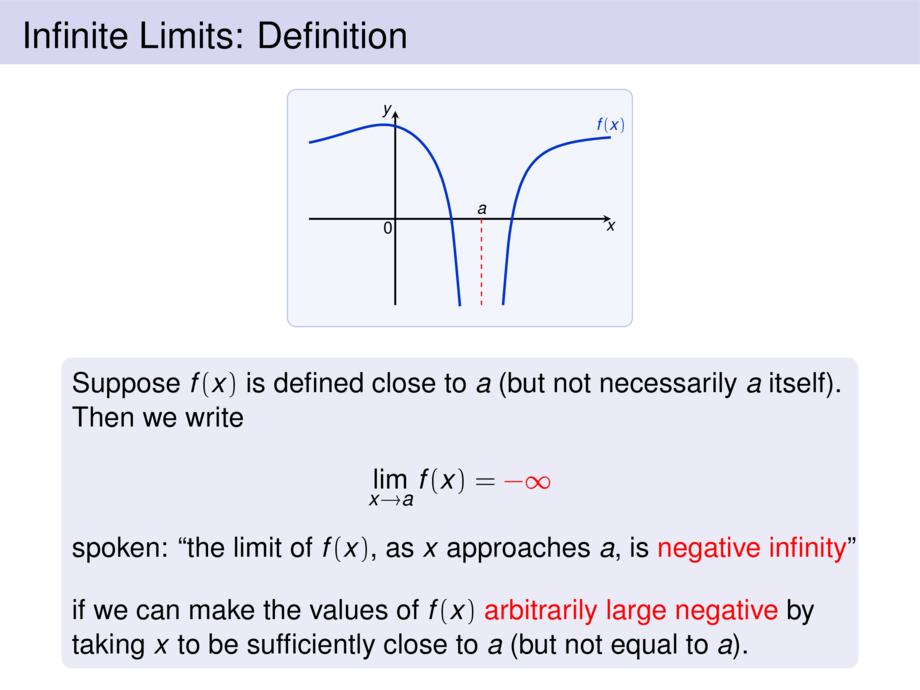



































































































123/154
\begin{frame}
\frametitle{Infinite Limits: Definition}
\begin{center}
\scalebox{.6}{
\begin{tikzpicture}[default]
\diagram{-2}{5}{-2}{2.5}{0}
\diagramannotatez
\draw[cblue,ultra thick] plot[smooth,domain=-2:1.5,samples=20] function{-(1/((x-2)**2)-3/(x**2 + 3)+0.6)+2};
\draw[cblue,ultra thick] plot[smooth,domain=2.5:5,samples=20] function{-(1/((x-2)**2)) + 2} node [above] {$f(x)$};
\node [anchor=south,inner sep=1mm] at (2cm,0cm) {$a$};
\draw [dashed,cred] (2cm,0cm) -- (2cm,-2cm);
\end{tikzpicture}
}
\end{center}
\begin{block}{}
Suppose $f(x)$ is defined close to $a$ (but not necessarily $a$ itself).
Then we write
\begin{gather*}
\lim_{x\to a} f(x) = \alert{-\infty}\\[1ex]
\text{spoken: ``the limit of $f(x)$, as $x$ approaches $a$, is \alert{negative infinity}''}
\end{gather*}
if we can make the values of $f(x)$ \alert{arbitrarily large negative}
by taking $x$ to be sufficiently close to $a$ (but not equal to $a$).
\end{block}
\vspace{10cm}
\end{frame}

